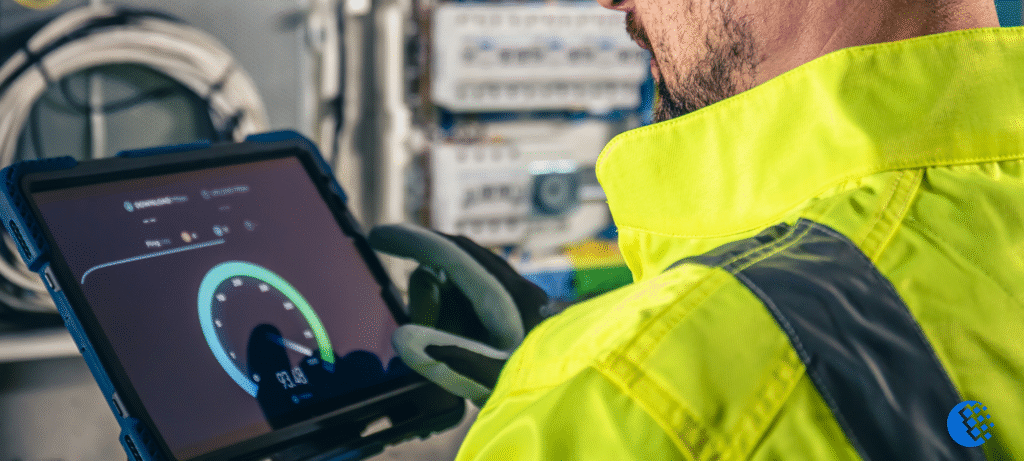In today’s energy-driven world, organizations are under constant pressure to manage electricity more effectively while ensuring reliability and sustainability. Power quality issues such as harmonics, voltage fluctuations, sags, and swells can damage equipment, increase costs, and lead to downtime. To overcome these challenges, advanced monitoring solutions are required.
Among the most efficient tools available is the METSEPM8240 Power Quality Meter. This article explores the Top Features of METSEPM8240 Power Quality Meter You Should Know, its benefits, and how integration with PLCHMI systems can further optimize performance in industrial and commercial environments.
Why Power Quality Monitoring Matters
Hidden Costs of Poor Power Quality
Unstable electricity supply doesn’t just increase energy bills; it also affects equipment efficiency and lifespan. Motors, drives, and sensitive electronics are especially vulnerable to irregularities.
Preventive Maintenance and Reliability
Continuous monitoring helps identify anomalies early. By acting before minor issues escalate, organizations save on repairs, reduce downtime, and ensure process continuity.
Sustainability and Efficiency
Energy monitoring plays a crucial role in sustainability initiatives. By understanding consumption patterns, businesses can reduce waste, lower emissions, and meet regulatory standards.
Overview of METSEPM8240 Power Quality Meter
The METSEPM8240 is a next-generation device designed for advanced energy monitoring and power quality analysis. It captures detailed electrical data, making it suitable for environments where precision and reliability are critical.
Where It Can Be Applied
- Industrial plants: Manage heavy machinery loads and improve operational efficiency.
- Commercial buildings: Track tenant usage and optimize facility performance.
- Healthcare facilities: Ensure uninterrupted power supply to critical equipment.
- Data centers: Protect sensitive systems from disturbances.
- Educational institutions: Manage energy usage across large campuses.
Top Features of METSEPM8240 Power Quality Meter You Should Know
High-Accuracy Measurement
This device offers Class 0.2S accuracy for energy measurement, ensuring that all readings are precise. Reliable data is the foundation of effective energy management.
Comprehensive Power Quality Analysis
Beyond basic parameters such as voltage, current, and frequency, the meter identifies harmonics, flicker, sags, swells, and transients. This makes it invaluable for facilities with sensitive equipment.
Real-Time Monitoring
The system provides live data on electrical performance. Instant visibility allows operators to respond quickly to irregularities.
Event Logging and Waveform Capture
When a disturbance occurs, the meter logs the event and records waveform data. This feature enables root-cause analysis, helping organizations resolve issues faster.
Flexible Communication Protocols
The meter supports multiple communication standards, allowing seamless integration with PLCHMI and other automation systems.
User-Friendly Interface
Designed with simplicity in mind, it provides clear and accessible data displays. Operators can quickly understand and act on the information.
Scalability and Adaptability
The meter is versatile enough to serve single equipment installations or complex multi-site operations, making it a future-proof solution.
Data Logging and Long-Term Storage
Historical data can be stored and analyzed over time, helping organizations detect patterns and optimize performance.
Technical Capabilities
Parameters Measured
The METSEPM8240 captures a wide range of parameters including:
- Voltage (line-to-line and line-to-neutral)
- Current per phase
- Active, reactive, and apparent power
- Power factor and efficiency levels
- Frequency stability
- Harmonic distortion levels
Disturbance Detection
It can detect and record events such as:
- Transients
- Voltage sags and swells
- Flicker
- Total harmonic distortion
Integration of METSEPM8240 with PLCHMI
What is PLCHMI?
PLCHMI is the combination of Programmable Logic Controllers (PLC) and Human Machine Interfaces (HMI).
- PLC: Executes automated control logic for machines and processes.
- HMI: Provides a visual interface for operators to monitor and interact with systems.
Benefits of Integration
- Centralized Control: Energy data can be monitored alongside machine performance.
- Automated Actions: PLC logic can trigger equipment shutdown or load adjustment if anomalies are detected.
- Visual Dashboards: HMI screens present power quality data in an intuitive way.
- Enhanced Maintenance: Predictive analytics reduce downtime and improve reliability.
Benefits of METSEPM8240 Power Quality Meter
Cost Reduction
By avoiding peak demand penalties and identifying wastage, facilities reduce operational expenses.
Improved Equipment Protection
Sensitive systems are safeguarded against fluctuations, extending their lifespan.
Compliance and Reporting
Accurate monitoring simplifies compliance with international energy standards.
Enhanced Sustainability
By reducing energy waste, facilities contribute to environmental goals.
Steps to Implement Power Quality Monitoring
Define Objectives
Decide whether your goal is cost savings, compliance, or reliability improvement.
Device Installation
Install the meter in key distribution points or critical load centers.
Configure PLCHMI Integration
Connect the monitoring system to PLC and HMI for centralized visualization and automation.
Enable Data Logging
Set recording intervals and store historical records for trend analysis.
Continuous Optimization
Use insights to implement energy-saving strategies and schedule preventive maintenance.
Industry Use Cases
Manufacturing
Factories rely on uninterrupted power. Monitoring ensures machines run efficiently and downtime is minimized.
Data Centers
Continuous monitoring safeguards servers and ensures redundant systems function optimally.
Healthcare
Hospitals depend on stable electricity. Monitoring ensures patient safety and smooth operation of medical devices.
Commercial Real Estate
Property managers can allocate energy costs fairly across tenants while improving building efficiency.
Challenges and Solutions
Data Overload
Too much raw data can overwhelm operators.
Solution: Integration with PLCHMI presents data in clear, actionable dashboards.
Rising Costs
Even with monitoring, costs may remain high.
Solution: Use data insights to implement load shifting and energy optimization.
Complex Integration
Linking different systems can be difficult.
Solution: Use universal communication protocols to ensure smooth integration.
Future Trends in Power Quality Monitoring
Smart Grids
Devices like the METSEPM8240 will play a role in smarter, more adaptive grids.
IoT and Cloud Integration
Cloud-based dashboards will allow operators to access data remotely.
Artificial Intelligence
AI-driven analytics will predict anomalies and recommend corrective measures automatically.
Deeper PLCHMI Integration
Future systems will feature even tighter synergy between power monitoring, automation, and user interfaces.
Conclusion
Power quality is central to efficiency, safety, and sustainability in today’s industries and commercial facilities. The Top Features of METSEPM8240 Power Quality Meter You Should Know include high-accuracy measurement, advanced event detection, waveform capture, and seamless integration with PLCHMI systems.
By deploying this meter, organizations can reduce costs, protect equipment, and maintain reliable operations. When combined with PLCHMI automation, the solution becomes even more powerful—offering predictive maintenance, centralized dashboards, and automated responses to anomalies.
In a world where energy efficiency and reliability define competitiveness, advanced monitoring devices like the METSEPM8240 are not just useful—they are essential for long-term success.





